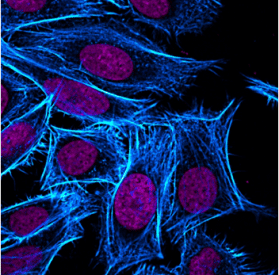Content #1
Content #1
Content #1
In nature, countless species have evolved to produce compounds that give them a distinct evolutionary advantage. Often, they come in the form of toxins and poisons that aid in self-protection or hunting. Due to the natural curiosity of the science community, it is no surprise that other uses for these naturally occurring compounds have been discovered. Biotium offers a wide variety of naturally-sourced products for research purposes; highlighted below are a few of the most notable.
Aside from those brave individuals who eat Fugu, puffer fish sushi, most people try to steer clear of this notoriously poisonous fish. Tetrodotoxin, the principal toxin in pufferfish, is utilized by scientists who perform research on the nervous system. This toxic compound blocks sodium channels in neurons, stopping their ability to transmit signals and effectively leading to paralysis and death. As a result, Tetrodotoxin is applied to the study of action potentials and nervous system communication.

The many-banded krait of Southeast Asia, Bungarus multicinctus, has been responsible for many fatal attacks. This snake’s venom contains the protein ⍺-Bungarotoxin, which works by binding to nicotinic acetylcholine receptors, disrupting the neuromuscular junction, resulting in the paralysis and eventual death of the victim. Its binding is almost irreversible, which makes it perfect for imaging these receptors when tagged with a fluorophore.
Cholera is a disease caused by Vibrio cholerae, a deadly bacteria that infects people through unclean water or food. This bacteria derives its virulence by excreting cholera toxin. The toxin is composed of two subunits: subunit A, which is responsible for its lethal toxicity, and subunit B, that binds it to molecules called gangliosides. Found on the exterior of mammalian cells, gangliosides are especially present in neurons. Though the cholera toxin is deadly, subunit B on its own is not, and can be conjugated to dyes and used in live cell staining or neuronal imaging.


Jeffrey Jung holds a B.S in Biology from Santa Clara University. He is a Scientist I who works in Chemistry R&D and Manufacturing at Biotium.